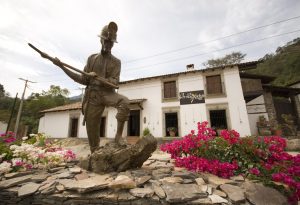All around the world, Mexico is known for tequila. This Mexican liquor is, after all, one of the country’s main exports. Even mezcal has had its share of the world’s attention lately, with hip mezcal bars popping up in Los Angeles, New York and London. But in the world of Mexican spirits, there are other, lesser known artisanal distillates as varied as Mexico’s geography. Here are just five you should know about.
Xtabentún
This drink comes from the Yucatan Peninsula, where it earned the nickname of “Mayan liqueur.” Its origins go back to the peak of the Maya civilization. Xtabentun (pronounced ish-tah-ben-TOON) is made with anise seeds and fermented honey from bees fed on the xtabentun flower, a type of morning glory. Craftsmen then add rum to the mix and the result is an aromatic, sweet drink with a hint of anise. It is related to balché, a Mayan “mead” used for its inebriating properties.
Here are three recipes you can try with Xtabentun.
Raicilla
This agave distillate originates from the western sierra in the state of Jalisco (same state where tequila comes from). It is most closely associated with Puerto Vallarta and its surrounding towns, like San Sebastián and Mascota, where it is produced in small, artisanal distilleries. This Mexican spirit is fruitier and a bit stronger than tequila. While tequila is distilled from blue agave, raicilla is prepared with a type of agave called lechuguilla. It is best served on ice and mixed with juice—orange, grapefruit or lime.
Check out these two raicilla recipes.
Sotol
Sotol, like raicilla, is another cousin of tequila and mezcal. This artisanal spirit is produced in the northern area of Mexico—in the states of Chihuahua, Coahuila and Durango—and it is made from a flowering plant commonly known as desert spoon. The indigenous Rarámuri people of Chihuahua have made a sotol drink for centuries, but production techniques were influenced by the Spanish. Sotol is known for its smooth flavor and its contrast with the smoky tones of mezcal.
Try sotol with these cocktail recipes.
Pox
Pronounced posh, this Mexican spirit is big in southeastern Mexico, especially in the state of Chiapas. Pox is prepared with sugarcane, corn and wheat, and has been used ritually by the Mayan communities in the Chiapas highlands for centuries. For years it was produced exclusively for local consumption, but Mexico’s government recently certified pox, allowing the drink to become available in posherías in San Cristobal de las Casas, Mexico City and Mérida. Pox is known for its sweet notes and smooth flavor. The name comes from the Tzotzil Mayan dialect and it means “medicine.”
Bacanora.
Think of bacanora as tequila’s rougher, stronger cousin. This spirit is native to the Mexican state of Sonora (specifically the town of Bacanora), where for generations it has been distilled from wild agave pacifica—again, in contrast with tequila’s grown blue agave. For most of the 1900s, the authorities banned the production of bacanora, but this changed in the 90s, when the drink was awarded its own origin denomination. It has been getting more and more attention since then.
Traditional, artisanal bacanora is only made in the town of the same name and the surrounding towns. It is best served neat. Try bacanora with this recipe.
Interested in exploring the fascinating world of Mexican spirits and Mexico’s cuisine? Let us design a trip for you and discover Mexico’s exciting tequila country, world-class restaurants, and wine scene. You can also head to Mexico’s less-visited destinations and experience unique flavors and aromas.





